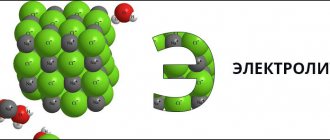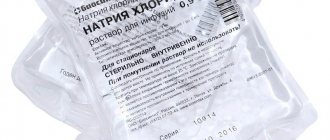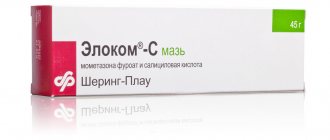Sodium sulfate is an inorganic compound, a salt of sodium and sulfuric acid H2SO4. In the literature it may be called sodium sulfate, anhydrous sodium sulfate, natural sodium sulfate, anhydrous reussin, anhydrous sodium sulfate, food additive E514. Formula Na2SO4.
The reagent occurs in nature in anhydrous form (mineral thenardite), as a crystalline hydrate (mirabilite or Glauber's salt) and is part of double salts (glauberite with calcium sulfate, astrachanite and vanthoffite with magnesium sulfate). There is a lot of it in salt lakes of the chloride-sulfate type, in the Kara-Bogaz-Gol gulf of the Caspian Sea.
Sodium sulfate is obtained from natural mineral salts (thenardite, mirabillite), bottom sediments of salt lakes or as a by-product of metallurgical production; enterprises producing hydrochloric acid, chromium compounds, artificial fibers.
| Chemical protective gloves KShchS-2 | Sodium sulfate anhydrous |
Indications for use
Like other drugs, sodium sulfate has both indications for use and contraindications.
To make sure that you need this particular drug, or you are not sure of the correct diagnosis, you should definitely consult a specialist.
So, among the indications for the use of sodium sulfate are the following:
- treatment of acute constipation (including the drug is effective and is often used to cleanse the intestines before carrying out any therapeutic procedures, examination, surgery and other manipulations in the intestinal cavity);
- elimination of the consequences of food poisoning (the drug not only effectively cleanses the intestines, but also prevents the absorption of toxins, poisons, etc. into the blood);
- cleansing the intestines after anthelmintic therapy (removes the remains of dead parasites and their waste products, which prevents possible intoxication);
- cleansing the intestines before therapeutic fasting (removes food debris that may prevent the patient from feeling comfortable, especially when the fasting technique is used by a person for the first time).
The main property of this drug is the effective cleansing of the intestinal cavity. There is even a special method of cleansing the body using Glauber's salt, which allows you to cleanse not only the gastrointestinal tract, but also the liver, and also lead to weight loss.
Mode of application
Sodium sulfate (also called Glauber's salt or sodium sulfate) is available as a powder. It is white, like regular table salt, but its granules are smaller.
The powder must be dissolved in a small amount (recommended in one or two glasses) of water at a comfortable temperature.
The amount of powder is primarily determined by the age of the patient. For adults, this is from 15 to 30 grams, depending on the severity of the situation, and for children, this is 1 gram for one year of life.
It is advisable to take the solution on an empty stomach, taking it at a time.
The effect of the laxative occurs 4 or 6 hours after use.
Interaction with other drugs
The drug does not have a complex chemical composition , its interaction with all medications does not manifest itself in any way. The only thing that needs to be understood is that, as in the case of using other laxatives, during the period of action of Glauber’s salt, taking other tablets is simply pointless, since the medicine will leave the body without having time to act at all or having worked partially.
Therefore, the pain that may appear during bowel movements cannot be eliminated or mitigated with the help of painkillers.
Sodium sulfate (sodium sulfate)
Sodium sulfate
or
sodium sulfate
, or
sodium sulfate
(eng.
sodium sulfate
) is the general name for sodium salts of sulfuric acid. Previously, Glauber's salt, which is a decahydrate of sodium sulfate, was widely used in medicine as a laxative. Currently, sodium sulfate and its hydrates, including Glauber's salt, as the only active ingredient are not approved for medical use either in Russia or in the USA.
Sodium sulfate is a chemical substance
The chemical formula of anhydrous sodium sulfate (lat. sodium sulphate anhydrous
) is Na2SO4. It appears as colorless crystals and is stable at temperatures below 32.4 °C. Above this temperature and in the presence of water, anhydrous sodium sulfate is converted to sodium sulfate decahydrate Na2SO4·10H2O, also called Glauber's salt. The molar mass of anhydrous sodium sulfate is 142 g/mol. Sodium hydrogen phosphate is an acid salt of sodium and sulfuric acid - NaHSO4, crystalline hydrate of sodium hydrogen sulfate - NaHSO4 H2O.
Sodium sulfate in medicine
Sodium salts of sulfuric acid are used or have been used in medicine as laxatives, antacids and mineral-vitamin complexes. According to ATC, sodium sulfate has the following codes:
- in the section “A06 Laxatives”, group “A06AD Osmotic laxatives” - code A06AD13
- in the section “A12 Mineral supplements” - code A12CA02
Sodium sulfates are included in medications as excipients. An example is Fortrans.
Sodium sulfate - laxative
The laxative effect of sodium sulfate is based on the increase and retention of fluid in the intestines due to osmotic processes.
The accumulation of fluid in the colon leads to increased peristalsis and bowel movements. In the United States, laxative medications are approved for use, intended to cleanse the intestines before colonoscopy and containing sodium sulfate among the active ingredients. One of these drugs is Suprep (active ingredients: sodium sulfate, potassium sulfate and magnesium sulfate). The illustration below provides detailed instructions (in English):
A domestic laxative containing anhydrous sodium sulfate is Lavacol.
Sodium sulfate - antacid
Sodium sulfate (together with sodium bicarbonate and sodium phosphate) is part of the Bourget mixture, which was widespread in the past and now has only historical significance.
Sodium sulfate is a so-called absorbable antacid. A positive characteristic of absorbed antacids is the speed of onset of the acid-neutralizing effect. The negative properties of these drugs are their short duration of action, the development in some cases of the “acid rebound” phenomenon (an increase in acid secretion after the end of the drug’s effect), and the effect on electrolyte metabolism (Shulpekova Yu.O., Ivashkin V.T.).
Currently, sodium sulfate is not used as an antacid.
Sodium sulfate and its compounds have contraindications, side effects and application features; consultation with a specialist is necessary.
Glauber's salt - article in the Encyclopedic Dictionary of Brockhaus and Efron
This section of the article contains outdated information that does not correspond to the approaches of modern medicine
| A.A. Lipsky (1856-1915), doctor of medicine |
Glauber's salt
has been used in medicine for a long time, both on its own and especially as an integral part of various laxative waters and powders.
It is used in therapy mainly for the purpose of acting on the intestinal canal and less often for a general effect on the body. Small amounts of it (up to ½ g) do not have a noticeable effect on the body, but repeated doses cause relaxation of the intestines and have a general effect on the body (for example, when consuming it, with a proper diet, obesity decreases, etc.). Large quantities, 15–30 g, act quickly as a strong laxative, causing copious amounts of water to be excreted. The secretion of bile, when consuming salt, noticeably increases; the general metabolism, according to Voith, does not change particularly. Its laxative effect is explained by the laws of diffusion and irritation of the intestinal mucosa (see Laxatives). Used in the treatment of gastrointestinal catarrh, chronic constipation (mainly in the form of mineral waters of Carlsbad, Marienbad, Franzensbad, Tarasp, etc.); in the treatment of stomach ulcers (according to Ziemssen), especially in the form of artificial Carlsbad salt; in the old days it was often used for acute inflammatory and febrile processes, for cerebral hyperemia, for typhoid fever, for intermittent fever, etc. According to the Russian pharmacopoeia, pharmacies have: Natrium sulfuricum depuratum crist
.
and Natrium sulfuricum siccum
, - devoid of water of crystallization; the latter is used in doses almost half that of the former.
Source - Encyclopedic Dictionary of Brockhaus and Efron, volume VIIIa (1893 ). Author of the article A.A. Lipsky (1856–1915) - sanitary doctor, doctor of medicine.
Sodium sulfates - food additive
Sodium sulfates, as a food additive, have code E514 and are characterized by SanPiN 2.3.2.1293-03 as an acidity regulator. Back to section
Side effects
The side effects of this drug include almost the same:
as with other laxatives, namely:
- digestive system disorder;
- colic in the intestines;
- spasms;
- nausea and sometimes vomiting;
- flatulence;
- in some cases, excessive urination.
It is worth knowing that the use of this drug can lead to dehydration of the body, since the volume of waste it removes is very large.
When not to use sodium sulfate
Contraindications to the use of sodium sulfate as a drug are also similar to contraindications to the use of other laxatives. Among them are the following:
- acute inflammatory diseases of the abdominal cavity (all types of stomach and intestinal ulcers, inflammation of the abdominal cavity, appendicitis and others);
- period of menstruation in females;
- pregnancy;
- not recommended for hemorrhoids and prohibited for its acute stages;
- cachexia (dehydration of the human body);
- problems with blood pressure (especially if it is low);
- old age of the patient.
You should not take the drug frequently, as this will not solve the problem of constipation, but will only worsen it, since the body will stop independently correctly absorbing nutrients and generally processing the food that comes into it.
The drug is intended for one-time use in emergency situations. If constipation occurs frequently, you should consult a specialist.
Application
Sodium sulfate is used as a charge component in glass production; used in kraft pulping and dyeing of cotton fabrics.
It is also used in the chemical industry as a raw material for the production of silicates Na, Na2S, H2SO4, (NH4)2SO4, soda, etc. In medicine, sodium sulfate is occasionally used as a laxative.
In the food industry it is known as food additive E514. Sodium sulfate is used as an acidity regulator.
It belongs to low-hazard substances (hazard class 4), but if overdosed in food products it leads to digestive disorders.
Storage conditions and periods
The shelf life of this drug is unlimited , if you follow the main storage conditions: the powder should be stored in a tightly closed container in a dry place, so that there is no possibility of moisture or foreign elements getting into the powder. It is advisable not to use sodium sulfate six months after its release.
Like other medicines, keep the drug out of the reach of children!
Properties
Anhydrous sodium sulfate is a white or grayish water-soluble granular substance with colorless crystals or granules; hygroscopic and unstable under normal conditions; odorless, with a bitter-salty taste. At room temperature, the reagent actively absorbs moisture from the air, turning into a crystalline hydrate with 10 water molecules Na2SO4*10H2O, and only at temperatures above +33 °C does it become stable. Slightly soluble in alcohols and aqueous-alcoholic solutions. Non-toxic, fire and explosion proof.
Sodium sulfate is a salt formed by a strong metal and a strong acid. Therefore, it is quite passive in chemical reactions. When heated with coal it turns into sodium sulfide Na2S. Interacts with strong acids and strong alkalis, aluminum, magnesium. Forms solid solutions with potassium sulfate K2SO4, lithium Li2SO4 and some other sulfates; double salts with scandium sulfate Na2SO4*Sc2(SO4)3 and yttrium Na2SO4*Y2(SO4)3; eutectic alloy with strontium sulfate SrSO4.
Price
This drug is very inexpensive, it can be bought in individual sachets for one use, so it is one of the most profitable options for laxatives.
The cost of a kilogram in Russia is about 100 rubles, and in Ukraine - 35 hryvnia . If you are unable to find Glauber's salt in pharmacies, you can ask in veterinary stores, since this drug is very actively used as a laxative for pets due to its very low effectiveness.
Analogs
Among the drugs similar to sodium sulfate in pharmacological properties are the following:
- Normacol;
- Dufalak;
- Fortrans;
- Lactulose;
- Normaze.
Basically, these drugs are much more expensive, since they have a more complex chemical composition, but they also have their advantages, so you need to consult a specialist on this issue.
Some of them are used specifically for poisoning or specifically for weight loss, to cleanse the body. Sodium sulfate is a more universal, and most importantly inexpensive and proven remedy.
Properties of sodium sulfate
Physical properties
| Property | Description |
| Appearance | White crystalline substance |
| Molar mass | 142.04 g/mol |
| Density | 2.68 g/cm3 |
| Melting temperature | 883°C |
| Standard molar enthalpy of formation at 298K ΔH°298, kJ/mol | −1387.9 (t)2 |
| Standard molar entropy at 298 K S°298, J/(mol•K) | 149.58 (t) |
| Standard molar heat capacity at 298 K Cp298, J/(mol•K) | 127,3 |
| Solubility in water, g/100 g | at 0°C - 4.5 at 20°C - 19.2 at 32.4°C - 49.8 at 100°C - 42.3 |
Chemical properties
When dissolved in water, sodium sulfate dissociates into ions:
Na2SO4↔ 2Na++ SO42-.
The solution has a neutral reaction.
When interacting with acids, it forms acid salts:
Na2SO4 + HСl = NaHSO4 + NaCl.
Enters into exchange reactions to form insoluble sulfates:
Na2SO4 + CaCl2 = 2NaCl + CaSO4↓,
Na2SO4 + SrCl2 = 2NaCl + SrSO4↓,
Na2SO4 + BaCl2 = 2NaCl + BaSO4↓.






